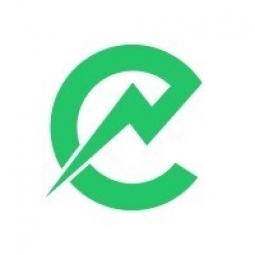适用行业
- 化学品
- 医疗保健和医院
适用功能
- 人力资源
- 产品研发
用例
- 租赁金融自动化
- 零售店自动化
关于客户
该客户是北美一家领先的医疗保健组织。该组织提供综合健康服务和患者护理,重点是提高医疗保健服务效率。医院拥有一支患者护理倡导者 (PCA) 团队,负责确保患者收到即将到来的预约的提醒信。这些信件是根据每位患者的需求和预约类型定制的。然而,该医院正面临员工流动率高以及创建和打印这些定制信件非常耗时的问题。
挑战
北美一家领先的医疗保健组织在管理患者沟通和记录管理流程方面面临着重大挑战。医院的患者护理倡导者 (PCA) 负责为即将到来的预约创建和发送提醒信,这项任务既耗时又容易出现人为错误。每封信都需要根据患者进行独特的定制,每封信的创建和打印最多需要 10 分钟。员工流动率高进一步加剧了这种情况,2022 年春季 PCA 的数量从 24 名下降到 10 名。医疗保健行业对医疗服务的需求不断增加,而工人数量不断减少,这使得寻找解决方案来简化这些重复性工作变得更加紧迫。任务并提高效率。
解决方案
该医院与 IT 服务提供商 Trumpet 合作,自动化为患者生成定制信件的过程。 Trumpet 使用 ElectroNeek 的订阅模型构建了一个自动化系统,允许 PCA 对符合条件的患者记录进行排队,并在自动化生成自定义信件后在打印机上拾取信件。该自动化机器人在他们的电子病历(EMR)软件中运行,使用内置过滤器监控患者队列。该机器人从患者记录中识别出各种信息元素,并将它们存储在内存中以供在信件中使用。它引用了 PCA 团队制作的一组配置文件,用于生成需要根据患者的预约、特殊指示和医生信息进行定制的信函的每个元素。自动化将这些元素组合成存储在电子病历中的基本信件模板,以创建最终的定制信件,该信件首先以数字方式保存到患者记录中,然后发送到办公室打印机。
运营影响
数量效益

Case Study missing?
Start adding your own!
Register with your work email and create a new case study profile for your business.
相关案例.

Case Study
Honeywell - Tata Chemicals Improves Data Accessibility with OneWireless
Tata was facing data accessibility challenges in the cement plant control room tapping signals from remote process control areas and other distant locations, including the gas scrubber. Tata needed a wireless solution to extend its control network securely to remote locations that would also provide seamless communication with existing control applications.

Case Study
Hospital Inventory Management
The hospital supply chain team is responsible for ensuring that the right medical supplies are readily available to clinicians when and where needed, and to do so in the most efficient manner possible. However, many of the systems and processes in use at the cancer center for supply chain management were not best suited to support these goals. Barcoding technology, a commonly used method for inventory management of medical supplies, is labor intensive, time consuming, does not provide real-time visibility into inventory levels and can be prone to error. Consequently, the lack of accurate and real-time visibility into inventory levels across multiple supply rooms in multiple hospital facilities creates additional inefficiency in the system causing over-ordering, hoarding, and wasted supplies. Other sources of waste and cost were also identified as candidates for improvement. Existing systems and processes did not provide adequate security for high-cost inventory within the hospital, which was another driver of cost. A lack of visibility into expiration dates for supplies resulted in supplies being wasted due to past expiry dates. Storage of supplies was also a key consideration given the location of the cancer center’s facilities in a dense urban setting, where space is always at a premium. In order to address the challenges outlined above, the hospital sought a solution that would provide real-time inventory information with high levels of accuracy, reduce the level of manual effort required and enable data driven decision making to ensure that the right supplies were readily available to clinicians in the right location at the right time.

Case Study
Advanced Elastomer Systems Upgrades Production
In order to maintain its share of the international market for thermoplastic elastomers AES recently expanded its Florida plant by adding a new production line. While the existing lines were operating satisfactorily using a PROVOX distributed control system with traditional analog I/O, AES wanted advanced technology on the new line for greater economy, efficiency, and reliability. AES officials were anxious to get this line into production to meet incoming orders, but two hurricanes slowed construction.

Case Study
Gas Pipeline Monitoring System for Hospitals
This system integrator focuses on providing centralized gas pipeline monitoring systems for hospitals. The service they provide makes it possible for hospitals to reduce both maintenance and labor costs. Since hospitals may not have an existing network suitable for this type of system, GPRS communication provides an easy and ready-to-use solution for remote, distributed monitoring systems System Requirements - GPRS communication - Seamless connection with SCADA software - Simple, front-end control capability - Expandable I/O channels - Combine AI, DI, and DO channels

Case Study
Driving Digital Transformations for Vitro Diagnostic Medical Devices
Diagnostic devices play a vital role in helping to improve healthcare delivery. In fact, an estimated 60 percent of the world’s medical decisions are made with support from in vitrodiagnostics (IVD) solutions, such as those provided by Roche Diagnostics, an industry leader. As the demand for medical diagnostic services grows rapidly in hospitals and clinics across China, so does the market for IVD solutions. In addition, the typically high cost of these diagnostic devices means that comprehensive post-sales services are needed. Wanteed to improve three portions of thr IVD:1. Remotely monitor and manage IVD devices as fixed assets.2. Optimizing device availability with predictive maintenance.3. Recommending the best IVD solution for a customer’s needs.








